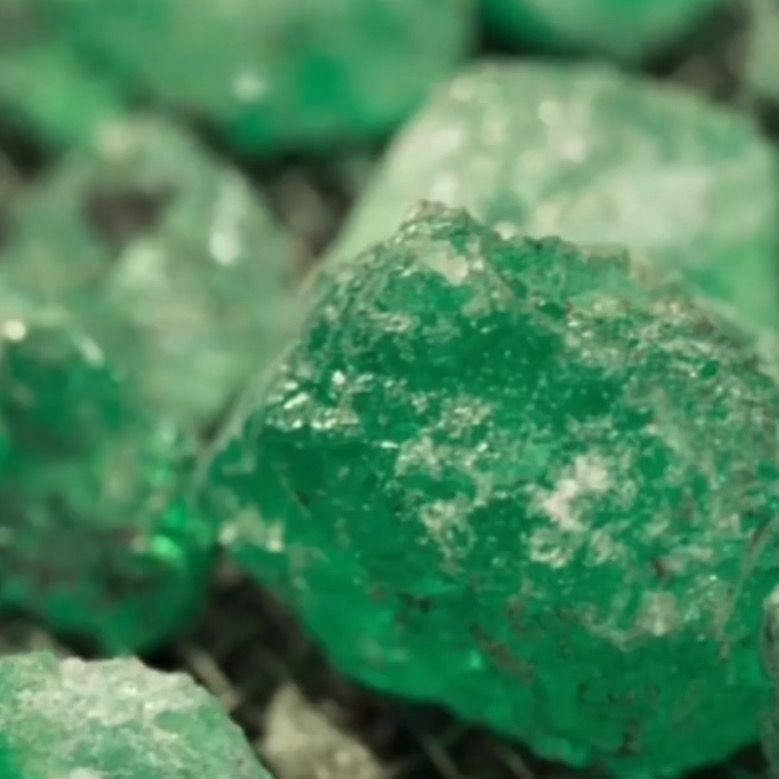
Exploring the Differences: Natural Emeralds vs. Lab-Grown Emeralds
Share
Introduction
Emeralds have long been cherished for their deep green color and timeless appeal. Whether set in engagement rings, pendants, or bracelets, emeralds symbolize luxury, elegance, and sophistication. However, in recent years, lab-grown emeralds have gained popularity as an affordable and sustainable alternative to natural emeralds. But what sets them apart? In this blog, we explore the key differences between natural and lab-grown emeralds to help you make an informed purchase.
1. What Are Natural Emeralds?

Natural emeralds are gemstones that form deep within the Earth's crust over millions of years. They are a variety of the mineral beryl and owe their green hue to traces of chromium and vanadium.
Sources of Natural Emeralds
Some of the world's most famous emerald deposits are found in:
-
Colombia – Known for its high-quality, rich green emeralds.
-
Zambia – Produces deep green emeralds with a slight bluish tint.
-
Brazil – Offers emeralds in a variety of shades, from light to dark green.
Unique Characteristics of Natural Emeralds
-
Inclusions (Jardin Effect): Most natural emeralds have internal inclusions or “jardin,” giving each stone a unique fingerprint.
-
Rarity & Value: Due to their natural formation, high-quality emeralds are rare and expensive.
-
Color Variations: Natural emeralds can range from light green to deep, intense green shades.
2. What Are Lab-Grown Emeralds?

Lab-grown emeralds, also known as synthetic emeralds, are created in laboratories using advanced technology. These gemstones have the same chemical composition and physical properties as natural emeralds but are produced under controlled conditions.
How Are Lab-Grown Emeralds Made?
-
Hydrothermal Process: Imitates natural conditions using high temperature and pressure to grow emerald crystals.
-
Flux Growth Process: Uses flux (a chemical solution) to facilitate the slow formation of emerald crystals over months.
Key Features of Lab-Grown Emeralds
-
Higher Clarity: Fewer inclusions than natural emeralds due to controlled formation.
-
Sustainability & Ethics: More eco-friendly and conflict-free compared to mined emeralds.
-
Affordability: Cost significantly less than natural emeralds while maintaining a similar appearance.
3. Key Differences Between Natural and Lab-Grown Emeralds
| Feature | Natural Emeralds | Lab-Grown Emeralds |
|---|---|---|
| Origin & Formation | Formed over millions of years within the Earth | Created in a lab within months |
| Appearance & Inclusions | Visible inclusions (jardin effect) | Fewer or no inclusions |
| Durability & Hardness | 7.5 – 8 on Mohs scale | 7.5 – 8 on Mohs scale |
| Pricing & Affordability | Expensive due to rarity | More affordable due to lab production |
| Sustainability & Ethics | Mining impact on the environment | Eco-friendly, sustainable alternative |
| Resale & Investment Value | High long-term investment value | Limited resale and investment value |
4. How to Identify a Natural vs. Lab-Grown Emerald
Knowing how to distinguish between natural and lab-grown emeralds is essential for buyers. Here’s what to look for:
-
Examine Inclusions: Natural emeralds have organic, garden-like inclusions, while lab-grown emeralds may have more uniform clarity.
-
Check for Certification: Always ask for gemstone certification from reputed labs like IGI, GIA, or GRS.
-
UV Light Test: Some lab-grown emeralds may fluoresce under UV light, unlike natural emeralds.
-
Magnification Test: A jeweler’s loupe can help identify unnatural growth patterns in synthetic emeralds.
5. Which One Should You Choose?
The choice between natural and lab-grown emeralds depends on personal preference, budget, and ethical considerations.
-
For Jewelry Enthusiasts on a Budget: Lab-grown emeralds offer a stunning and affordable option.
-
For Investors & Collectors: Natural emeralds hold better resale and long-term value.
-
For Ethical Buyers: Lab-grown emeralds are sustainable and conflict-free.
-
For Special Occasions: If you want a gemstone with historical significance, a natural emerald is ideal.
Conclusion
Both natural and lab-grown emeralds have their unique charm and benefits. Natural emeralds boast rarity and investment value, while lab-grown emeralds provide an ethical and budget-friendly alternative. Whether you are looking for an heirloom piece or a stylish accessory, understanding these differences will help you make a confident purchase.
Explore our exquisite collection of natural and lab-grown emerald jewelry today and find the perfect piece to complement your style!
